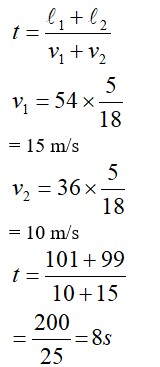A spring with one end attached to a mass and the other to a rigid support is stretched and released.
(a) Magnitude of acceleration, when just released is maximum.
(b) Magnitude of acceleration, when at equilibrium position, is maximum.
(c) Speed is maximum when mass is at equilibrium position.
(d) Magnitude of displacement is always maximum whenever speed is minimum.
A spring with one end attached to a mass and the other to a rigid support is stretched and released.
(a) Magnitude of acceleration, when just released is maximum.
(b) Magnitude of acceleration, when at equilibrium position, is maximum.
(c) Speed is maximum when mass is at equilibrium position.
(d) Magnitude of displacement is always maximum whenever speed is minimum.
-
1 Answer
-
This is a multiple choice answer as classified in NCERT Exemplar
(a, c) as we know restoring force is F=-kx
Potential energy of the spring = 1/2kx2
The restoring force is central hence, when particle released it will execute SHM about equilibrium position
Also acceleration= f/m=-kx/m
But at equilibrium position when x=o, a also 0 and at equilibrium position potential energy converted into kinetic energy so speed will also maximum that time.
Similar Questions for you
Please find the solution below:
[h] = ML2T-1
[E] = ML2T-2
[V] = ML2T-2C-1
[P] = MLT-1
According to question, we can write
10 =
Average speed
(d) Initial velocity
Final velocity
Change in velocity
Momentum gain is along
Force experienced is along
Force experienced is in North-East direction.
Taking an Exam? Selecting a College?
Get authentic answers from experts, students and alumni that you won't find anywhere else
Sign Up on ShikshaOn Shiksha, get access to
- 66k Colleges
- 1.2k Exams
- 680k Reviews
- 1800k Answers



